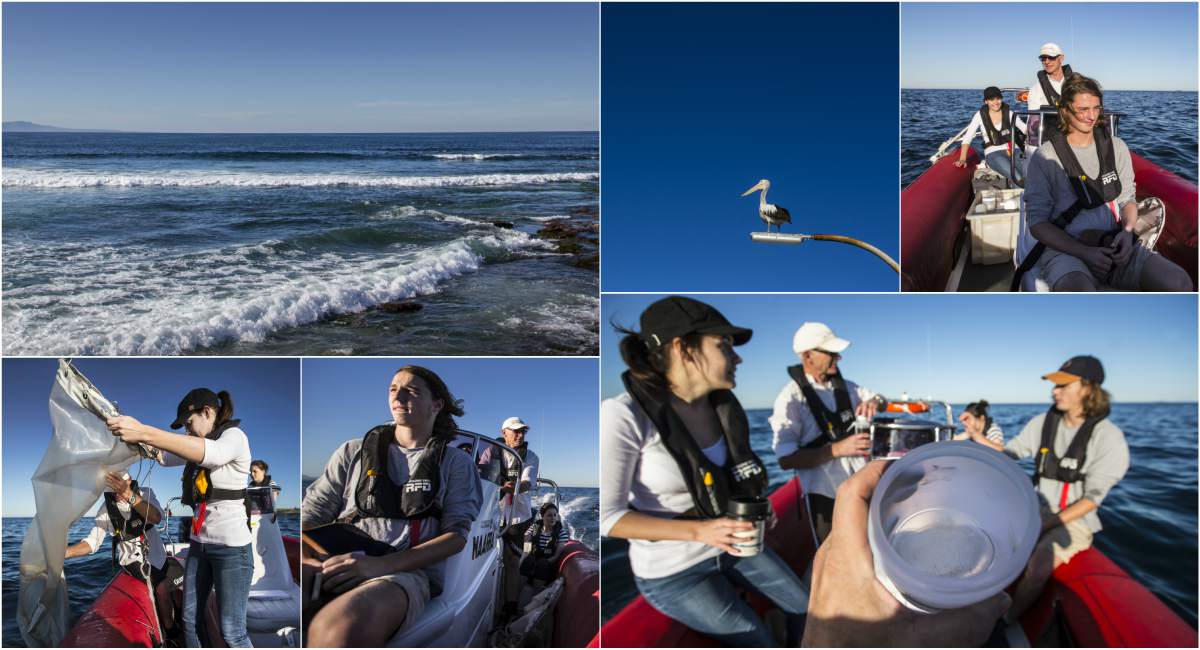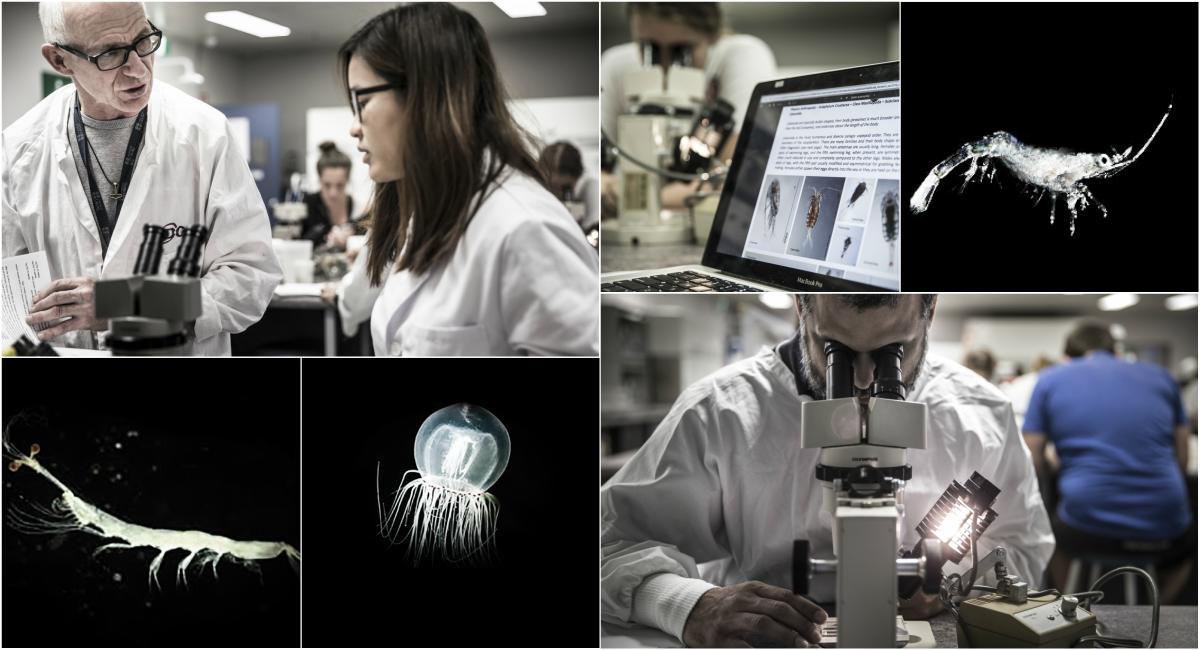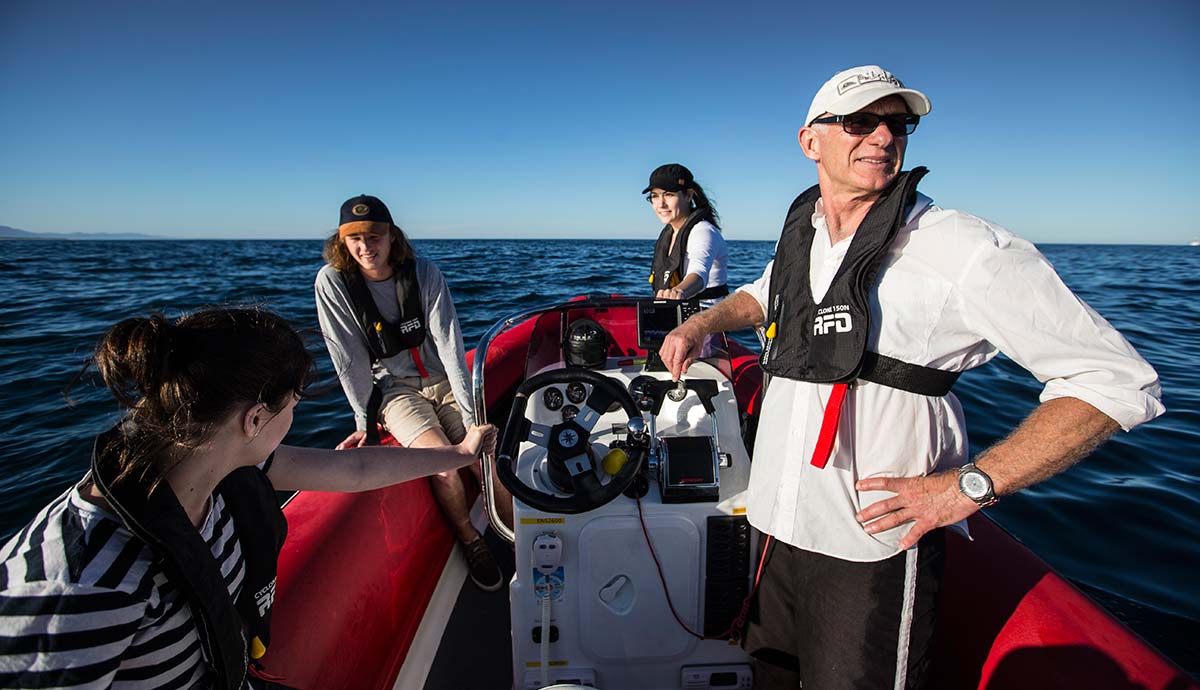May 23, 2016
Students take to the ocean in search of microscopic monsters
Future marine biologists get up close and personal with microscopic creatures of the deep.
With creature names like Medusa and Lucifer, you might expect to be learning about mythology not marine biology.
But in a laboratory at UOW, undergraduate students have the opportunity to see the real monsters of the ocean up close. A diverse group of organisms called plankton.
The word plankton comes from the Greek word planktos, which means drifter, or wanderer, which is precisely what plankton are. Tiny wandering plants and animals that come in a variety of shapes and colours and drift at the mercy of ocean waves, currents and winds.
From the shores of Belmore Basin, near the city of Wollongong, Professor Andy Davis (pictured above right) from the School of Biological Sciences at UOW takes a group of students on a fishing trip with a difference.

There are no fishing rods on this boat expedition, only plankton nets. These are used to collect the planktonic organisms. The long, funnel shape nets are towed behind the research vessel over a short distance, which allows them to catch different sized plankton in their thousands.
“This is the sort of fishing trip where you are guaranteed of a big catch,” laughs Professor Davis.
There are two main types of plankton. Phytoplankton, are plant-like plankton – meaning they makes their own food from the sun. And then there is zooplankton, which includes sea animals, from jellyfish to crab larvae.
One of the biggest and most plentiful types of zooplankton is krill. And although they are only around 15mm long, they are so abundant that enormous animals, like blue whales, can survive on a diet of krill alone.
“Most of the plankton from the nets are almost invisible to us. So we take these guys back to the lab and identify the different species under microscopes,” explains Professor Davis, as he shows me a small container with a couple of hundred larval forms of animals, crabs and plant matter.

Plankton may be microscopic, but their influence on the planet is huge. These tiny plants and animals might not seem very important, but they are probably the most important part of the ocean food web. Not only are they the basis of the aquatic food chain, but collectively they generate 50 per cent of the planet’s oxygen through photosynthesis.
“Students are often startled when I tell them that the animal they are looking at in their samples is Lucifer.”
“Well, to be more specific, it is just a planktonic shrimp in the genus Lucifer. But yes, this is a very grandiose name for a creature less than a centimetre long,” Professor Davis said.
